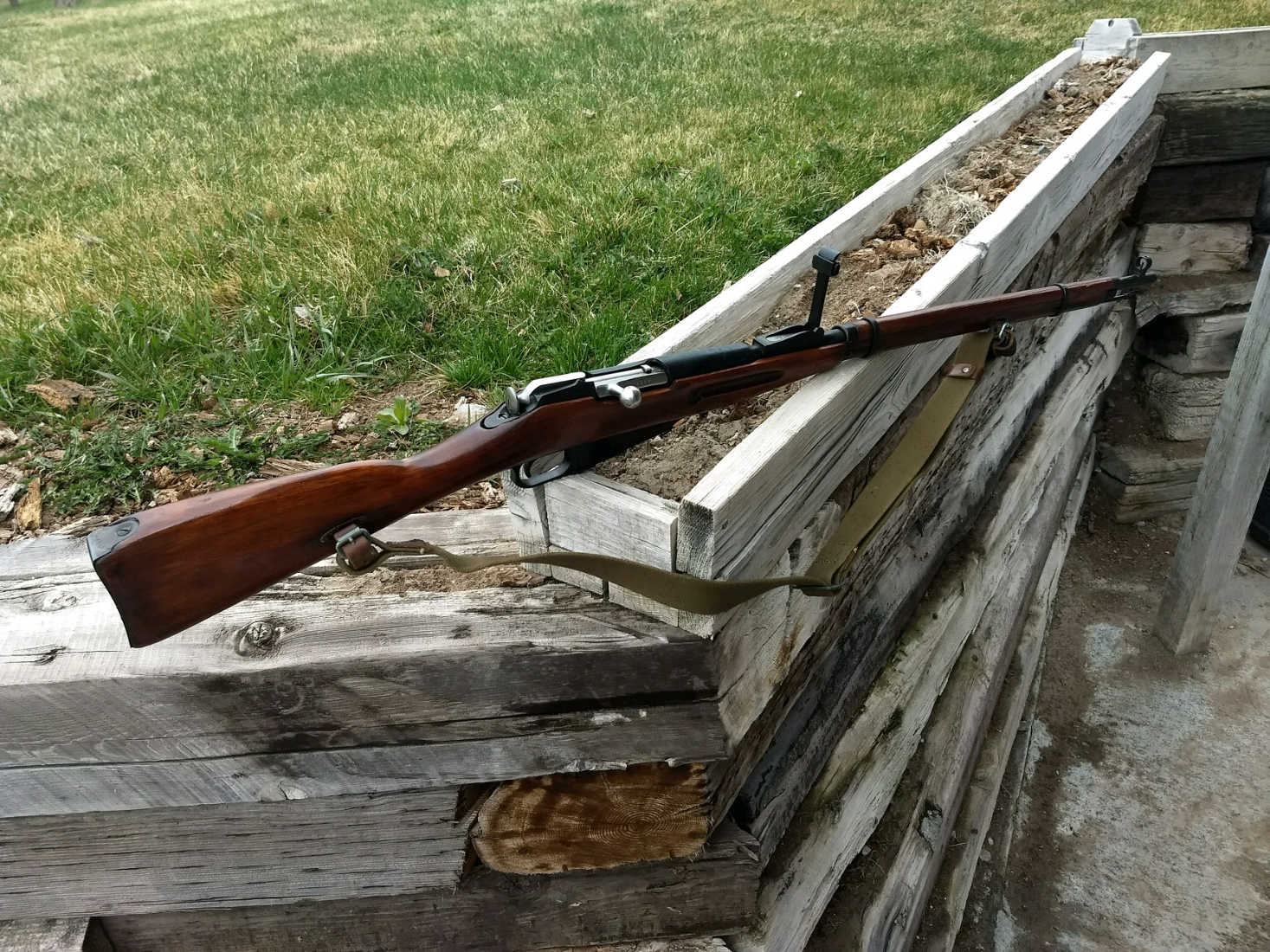By: Randy Tucker
Sometimes history finds you in the most unexpected ways.
During the summer of 2013, my son, Brian, my son-in-law, Adam, and I were working our way through the Bloedorn Lumber garage sale. As we checked out tools, hinges, trusses, and other bits of carpentry bargains, our friend Clay approached us from across the parking lot.
Clay’s arrival always livens up the scene. After his usual comments on the impending global oil shortage, he made a quick segue to firearms. “You guys want to buy a World War II Soviet combat rifle?” he asked.
You don’t just make such a statement to anyone. Some people would construe it to be the opening dialogue of a group of “gun nuts,” but there is much more to it than that. Clay knew a gun collector in the tiny Wyoming ghost town of Jeffrey City who ordered a crate of these rifles from another collector back east, and he was taking orders.
Mix a bit of tangible history, a little gunpowder, and some high-velocity, full-metal jacketed bullets, and you have the entry point from modernity to a mysterious, violent past.
30 Wars in 120 Years
The Mosin-Nagant bolt-action combat rifle takes its name from its co-inventers Captain Sergei Ivanovich Mosin of the Tsar’s Army and Leon Nagant.
The rifle entered production for the first time in 1891 and served as the Russian Army’s primary infantry weapon in World Wars I and II. The rifle is still in use today, with American soldiers and Marines taking hostile fire in Iraq and Afghanistan from rebels armed with the deadly 7.62 x 54 mm relic. In all, it has served as the weapon of choice for 120 years in more than 30 wars spanning from France to Indochina.
A combined four kilograms of Siberian hardwood with some industrial grade Ukrainian steel produced literally by the tens of millions made the weapon incredibly inexpensive, yet supremely lethal.
The rifle gained brief notoriety as the weapon of choice for the Soviet Union’s premier sniper, Vasily Zaytsev, when his story was retold in Enemy at the Gates (2001). Zaytsev killed 225 German soldiers, including 11 Nazi snipers, during the first three months of the Battle of Stalingrad in the winter of 1942-43.
Zaytsev’s Mosin-Nagant claimed the life of Nazi officers up to 800 meters away. Just the thought of Zaytsev taking aim on exposed troops hampered the movement of hundreds of thousands of paranoid German soldiers. The effect on German morale of this single shooter, with his already antiquated rifle, is hard to appreciate fully.
Firearms, Valor, and Conflict
The intrigue of a weapon with such a vast history compels those with an interest in firearms, valor, and conflict to take a much closer look.
The rifles finally arrived a couple of weeks later at the collector’s ranch and came with 250 rounds of strangely crafted Russian ammunition, a 14-inch long, triangular-shaped bayonet, and a simple cleaning kit. Brian picked them up on his way through Jeffrey City and took them to Laramie, where Adam and I were able to hold them for the first time.
The patina shimmering on the aging hardwood stock was just as we imagined it. The bayonet wasn’t particularly sharp, but the design, carefully crafted to avoid creating a suction-like grip on the blade after stabbing an enemy, was all business.
We loaded the three rifles into Adam’s Terrain and set off to some open land in the national forest just northeast of Laramie.
The Mosin-Nagant weighs in at a respectable 8.8 pounds, with just enough heft to give the impression of a very solid firearm.
Familiar with the absence of style, grace, and comfort that epitomizes Soviet Union-era concrete architecture, I expected the recoil from the weapon to be a bit on the bone-jarring side. Adam noted the top Internet search for the weapon produced advertisements for rubber recoil pads.
We loaded the five-round magazine, set our feet, and fired. It was a surprisingly smooth shooting rifle, with less recoil than a common 12-gauge shotgun. The bolt was smooth, too, and the shells ejected cleanly, not even bothering Adam’s left-handed shooting style.
The boys elected to have their rifles altered to take a variable power scope, but I declined, preferring to keep the weapon in its pristine state.
A Strong Connection to the Past
On Memorial Day, we watched old newsreel footage of the Soviet Army attacking Berlin in the final days of the battle against Hitler’s falling 1000-year Reich. In every scene, Soviet soldiers bravely fought hand-to-hand, house-to-house, and inch-by-inch in the devastated German capital. Each of them carried the same Mosin-Nagant that sat quietly in the corner of the living room that day.
It was a strong connection to the past to see the stolid Russian Army carrying the same weapon we recently fired after a void of 70-plus years.
History is a tangible, visceral thing. Too many people consider it just a cold page in some obscure book, but it is a living, breathing entity that demands our respect, our interest, and the best of our intellect to comprehend.
Randy Tucker is a retired history teacher and freelance writer from western Wyoming. He has a lifetime of experience in farming, ranching, hunting and fishing in the shadow of the Wind River Mountains. Contact him at [email protected].
Photo Credit: Randy Tucker

